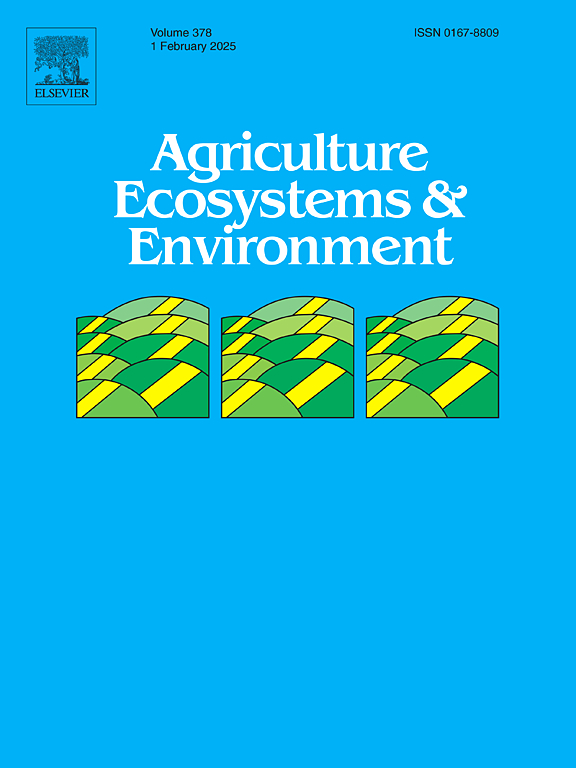The competitive effects of crop straw return and nitrogen fertilization on soil acidification
IF 6
1区 农林科学
Q1 AGRICULTURE, MULTIDISCIPLINARY
引用次数: 0
Abstract
Soil acidification has become an increasingly severe issue in China, with the role of straw return practices in mitigating this challenge remaining widely debated. This study examines the combined effects of straw return and nitrogen (N) fertilization on soil pH, highlighting their competing influences on acidification. A meta-analysis of 44 field trials across China revealed that N fertilization alone reduced soil pH by an average of 3.72 %. However, straw return mitigated this pH decline, increasing soil pH by 0.02 and 0.10 units in acidic and neutral soils, respectively. Compared to N-only treatment, the interaction between N and straw return produced varying effects. High N inputs (>100 kg/ha) with low straw return further decreased soil pH, while high straw return with low N inputs moderately alleviated acidification. This phenomenon is attributed to the ability of straw return to counteract H+ ion production through several mechanisms such as replenishing cations removed during crop harvest, increasing soil organic carbon (SOC), and improving nitrogen use efficiency (NUE) by optimizing the soil carbon-to-nitrogen (C/N) ratio. These findings suggest that integrating balanced straw return practices with N fertilization can effectively mitigate acidification caused by N inputs. These strategies offer significant potential for promoting sustainable agricultural systems in China and beyond.
作物秸秆还田与施氮对土壤酸化的竞争效应
土壤酸化在中国已成为一个日益严重的问题,秸秆还田在缓解这一挑战方面的作用仍存在广泛争议。本研究考察了秸秆还田和氮肥施肥对土壤pH值的综合影响,强调了它们对酸化的竞争影响。对中国44个大田试验的荟萃分析表明,单施氮肥平均降低土壤pH值3.72% %。然而,秸秆还田缓解了这种pH下降,在酸性和中性土壤中,土壤pH分别增加0.02和0.10个单位。与单氮处理相比,氮素与秸秆还田的交互作用产生了不同的效果。高施氮量(>100 kg/ha)和低施氮量进一步降低了土壤pH值,而高施氮量和低施氮量适度缓解了土壤酸化。这一现象归因于秸秆还田能够通过补充作物收获过程中流失的阳离子、增加土壤有机碳(SOC)以及通过优化土壤碳氮比(C/N)提高氮利用效率(NUE)等机制抵消H+离子的产生。综上所述,秸秆平衡还田配施氮肥可有效缓解氮素输入引起的土壤酸化。这些战略为在中国及其他地区推广可持续农业系统提供了巨大的潜力。
本文章由计算机程序翻译,如有差异,请以英文原文为准。
求助全文
约1分钟内获得全文
求助全文
来源期刊

Agriculture, Ecosystems & Environment
环境科学-环境科学
CiteScore
11.70
自引率
9.10%
发文量
392
审稿时长
26 days
期刊介绍:
Agriculture, Ecosystems and Environment publishes scientific articles dealing with the interface between agroecosystems and the natural environment, specifically how agriculture influences the environment and how changes in that environment impact agroecosystems. Preference is given to papers from experimental and observational research at the field, system or landscape level, from studies that enhance our understanding of processes using data-based biophysical modelling, and papers that bridge scientific disciplines and integrate knowledge. All papers should be placed in an international or wide comparative context.
 求助内容:
求助内容: 应助结果提醒方式:
应助结果提醒方式:


